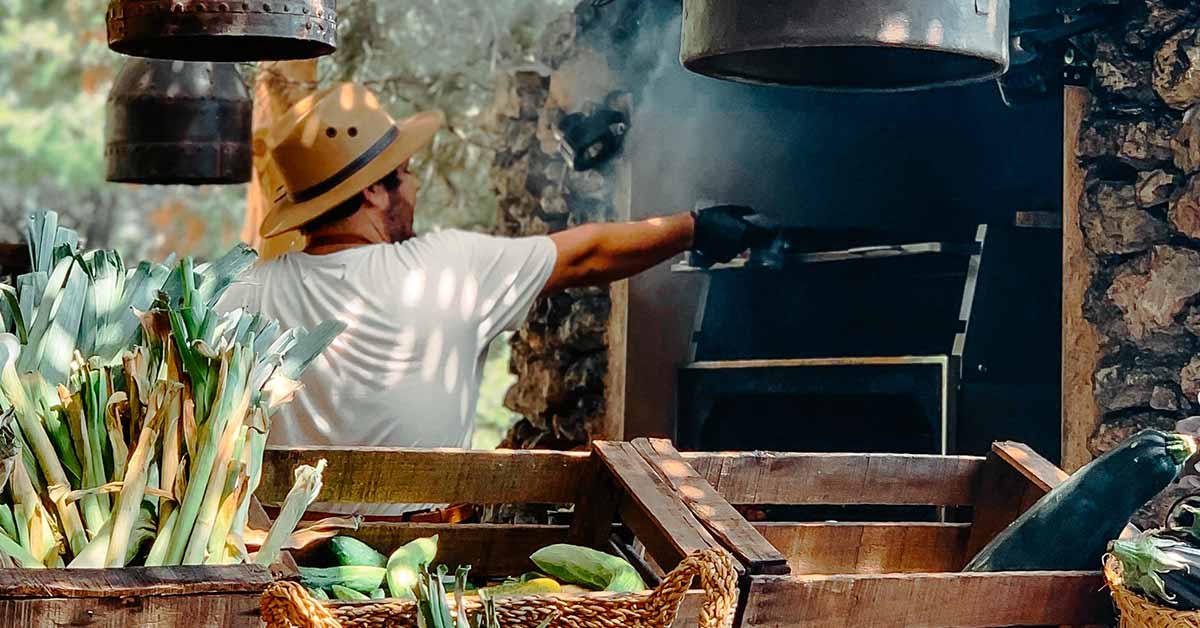Farm-to-table dining is a growing trend in Iowa City, offering fresh, seasonal, and locally sourced ingredients. By connecting restaurants with local farmers, farm-to-table practices support sustainable agriculture and boost the local economy. This guide explores the benefits and challenges of farm-to-table dining in Iowa City, providing case studies, trends, and strategies for building relationships with local farmers. Learn about menu planning, organic farming, ethical meat sourcing, and the impact on local economies. Get inspired by the role of chefs in the farm-to-table movement at bigtobokki.vn.
Case Studies of Successful Farm-to-Table Models
Many restaurants have found success with farm-to-table models. Here are a few examples:
- Alice Waters’ Chez Panisse in Berkeley, California, is a pioneer in the farm-to-table movement. The restaurant has been serving locally sourced, organic food since 1971.
- Dan Barber’s Blue Hill in New York City is another well-known farm-to-table restaurant. The restaurant has its own farm in the Hudson Valley, where it grows much of the food it serves.
- Sean Brock’s Husk in Charleston, South Carolina, is a farm-to-table restaurant that celebrates the cuisine of the American South. The restaurant sources its ingredients from local farmers and fishermen.
| Restaurant | Location | Type of Cuisine |
|---|---|---|
| Chez Panisse | Berkeley, California | Californian |
| Blue Hill | New York City | American |
| Husk | Charleston, South Carolina | Southern |
These are just a few examples of the many successful farm-to-table restaurants across the country. Farm-to-table dining is a growing trend, as more and more people are interested in eating fresh, local, and sustainable food.
If you are interested in learning more about farm-to-table dining, there are many resources available online. You can also visit local farmers markets to meet farmers and learn about their products. By supporting farm-to-table restaurants and farmers, you can help to create a more sustainable food system.
Read more about farm-to-table trends in fine dining

Farm-to-Table Trends in Fine Dining
Fine dining restaurants are increasingly embracing farm-to-table practices, offering diners a unique and delicious way to experience the freshest, most seasonal ingredients. This trend is being driven by a number of factors, including:
Consumer Demand
Consumers are becoming more and more interested in knowing where their food comes from and how it is produced. They want to eat food that is fresh, healthy, and sustainable. Farm-to-table restaurants can meet this demand by providing diners with a direct connection to the farmers who grow their food.
Support for Local Businesses
Farm-to-table restaurants support local businesses by sourcing their ingredients from local farmers. This helps to create a more sustainable food system and supports the local economy. Many farm-to-table restaurants also work with local artisans to create unique and memorable dining experiences.
Creativity and Innovation
Farm-to-table restaurants offer chefs the opportunity to be more creative and innovative with their menus. By working with local farmers, chefs can get access to a wider variety of ingredients, including unique and seasonal produce. This allows them to create dishes that are truly unique and memorable.
Read more about building relationships with local farmers
| Benefits of Farm-to-Table Dining | Challenges of Farm-to-Table Dining |
|---|---|
|
|
The Future of Farm-to-Table Dining
The farm-to-table trend is expected to continue to grow in the years to come. As consumers become more and more interested in eating fresh, healthy, and sustainable food, farm-to-table restaurants will continue to thrive. These restaurants offer diners a unique and delicious way to experience the best that their local food system has to offer.
Read more about menu planning in farm-to-table cuisine

Building Relationships with Local Farmers
Benefits of Building Relationships with Local Farmers
Building relationships with local farmers offers numerous benefits for both restaurants and consumers. By working directly with farmers, restaurants can access fresher, more flavorful ingredients that are often unavailable through traditional distribution channels. This allows chefs to create more creative and innovative dishes that are sure to impress diners. In addition, supporting local farmers helps to create a more sustainable food system and supports the local economy.
- Access to fresher, more flavorful ingredients
- Support for local businesses
- More creative and innovative menus
How to Build Relationships with Local Farmers
Building relationships with local farmers takes time and effort, but it is well worth it in the long run. Here are a few tips for getting started:
- Visit local farmers markets. Farmers markets are a great way to meet local farmers and learn about their products. You can also get a sense of the quality of their produce and meet the people who grow it.
- Attend local food events. Many communities host food events throughout the year, such as farm-to-table dinners and cooking classes. These events are a great way to meet farmers and learn more about their farming practices.
- Contact local farmers directly. You can also contact local farmers directly by phone or email. Many farmers are happy to give tours of their farms and answer questions about their products.
Read more about menu planning in farm-to-table cuisine
| Benefits of Building Relationships with Local Farmers | Challenges of Building Relationships with Local Farmers |
|---|---|
|
|
Read more about the role of seafood in farm-to-table
Quotes from Local Farmers
“Building relationships with local restaurants is essential for our farm. It allows us to get our products to consumers who appreciate the quality and freshness of our food.” – John Smith, owner of Smith Family Farm”I love working with local restaurants because it gives me the opportunity to share my passion for farming with others. I’m proud to know that my food is being used to create delicious and nutritious meals.” – Mary Jones, owner of Jones Family Farm

Menu Planning in Farm-to-Table Cuisine
Seasonal Ingredients and Creative Dishes
Menu planning in farm-to-table cuisine is a delicate dance between creativity and practicality. Chefs must consider the availability of seasonal ingredients and work closely with local farmers to create dishes that are both delicious and sustainable. This approach not only ensures the freshest, most flavorful ingredients but also supports local businesses and reduces the environmental impact of food production.Read more about farm-to-table baking and desserts
| Benefits of Seasonal Ingredients | Challenges of Seasonal Ingredients |
|---|---|
|
|
Collaboration with Local Farmers
Collaboration with local farmers is essential for successful farm-to-table menu planning. Chefs should establish relationships with farmers to learn about their growing practices, understand the availability of ingredients, and get advance notice of upcoming harvests. This collaboration allows chefs to create menus that are tailored to the specific products of their local farms.Read more about the role of organic farming in farm-to-table
- Visit local farmers markets. Farmers markets are a great way to meet local farmers and learn about their products. You can also get a sense of the quality of their produce and meet the people who grow it.
- Attend local food events. Many communities host food events throughout the year, such as farm-to-table dinners and cooking classes. These events are a great way to meet farmers and learn more about their farming practices.
- Contact local farmers directly. You can also contact local farmers directly by phone or email. Many farmers are happy to give tours of their farms and answer questions about their products.

The Role of Organic Farming in Farm-to-Table
Benefits of Organic Farming
Organic farming is a method of farming that emphasizes the use of natural fertilizers and pest control methods. Organic farmers avoid the use of synthetic pesticides, herbicides, and fertilizers, which can be harmful to the environment and to human health. Organic farming practices also promote biodiversity and soil health.Read more about the ethics of meat sourcing in farm-to-table
| Benefits of Organic Farming | Challenges of Organic Farming |
|---|---|
|
|
Challenges of Organic Farming
Organic farming can be more challenging than conventional farming, as it requires farmers to use natural methods to control pests and diseases. Organic farmers may also have lower yields than conventional farmers, as they cannot use synthetic fertilizers to boost crop growth. Despite these challenges, organic farming is becoming increasingly popular as consumers become more aware of the benefits of organic food.Read more about sourcing locally: challenges and benefits
- Transitioning to organic farming can be a challenge. Farmers must stop using synthetic pesticides and fertilizers, and they must adopt new methods of pest and disease control. This can be a time-consuming and expensive process.
- Organic farming can be more labor-intensive than conventional farming. Farmers must rely on natural methods to control pests and diseases, which can require more time and effort.
- Organic crops may have lower yields than conventional crops. This is because organic farmers cannot use synthetic fertilizers to boost crop growth.

The Ethics of Meat Sourcing in Farm-to-Table
In farm-to-table dining, the ethical sourcing of meat is of utmost importance. Animals raised for food should be treated humanely and slaughtered in a manner that minimizes pain and suffering. Farm-to-table restaurants work closely with local farmers who share their commitment to animal welfare. By supporting restaurants that prioritize ethical meat sourcing, consumers can help to create a more sustainable and compassionate food system.
Read more about sourcing locally: challenges and benefits
| Benefits of Ethical Meat Sourcing | Challenges of Ethical Meat Sourcing |
|---|---|
|
|

Sourcing Locally: Challenges and Benefits
Benefits of Sourcing Locally
Sourcing ingredients locally offers several benefits for farm-to-table restaurants. It allows them to access fresher, more flavorful ingredients that are often unavailable through traditional distribution channels. This enables chefs to create more creative and innovative dishes that are sure to impress diners. In addition, supporting local farmers helps to create a more sustainable food system and supports the local economy.
- Access to fresher, more flavorful ingredients
- Support for local businesses
- More creative and innovative menus
Read more about farm-to-table marketing strategies
Challenges of Sourcing Locally
While there are many benefits to sourcing locally, there are also some challenges that restaurants must consider. One challenge is the limited availability of ingredients. Local farmers may not be able to provide the same variety or quantity of ingredients as larger, commercial farms. This can make it difficult for restaurants to create a diverse menu that meets the needs of their customers.
| Benefits of Sourcing Locally | Challenges of Sourcing Locally |
|---|---|
|
|
Read more about understanding the farm-to-table conceptAnother challenge is price fluctuations. Local ingredients can be more expensive than those sourced from larger farms. This is because local farmers often have higher production costs, such as labor and transportation. Restaurants must be prepared to pay a premium for local ingredients in order to support their commitment to farm-to-table dining.

Farm-to-Table Marketing Strategies
Building a Strong Brand
Farm-to-table restaurants can build a strong brand by highlighting their commitment to fresh, local ingredients. They can use their marketing materials to tell the stories of the farmers they work with and to educate customers about the benefits of eating locally sourced food. By creating a strong brand, farm-to-table restaurants can attract customers who are looking for a unique and authentic dining experience.Read more about understanding the farm-to-table concept
Using Social Media
Social media is a powerful tool that farm-to-table restaurants can use to connect with customers and promote their brand. They can use social media to share photos of their dishes, to post updates about their menu, and to run contests and giveaways. By using social media effectively, farm-to-table restaurants can reach a wider audience and generate excitement about their food.
| Social Media Platform | Benefits |
|---|---|
| Large user base, easy to share photos and videos | |
| Visual platform, great for sharing photos of food | |
| Real-time updates, good for connecting with customers |
Partnering with Local Businesses
Farm-to-table restaurants can partner with local businesses to cross-promote their products and services. For example, they can partner with local farmers to offer farm tours or cooking classes. They can also partner with local breweries or wineries to offer beer or wine pairings with their meals. By partnering with local businesses, farm-to-table restaurants can build stronger relationships with their community and attract new customers.Read more about the role of chefs in the farm-to-table movement
Hosting Events
Farm-to-table restaurants can host events to attract new customers and build relationships with their community. They can host farm-to-table dinners, cooking classes, or even farm tours. By hosting events, farm-to-table restaurants can create a unique and memorable experience for their guests and promote their commitment to fresh, local food.
- Farm-to-table dinners
- Cooking classes
- Farm tours

The Impact of Farm-to-Table on Local Economies
Creating Jobs and Economic Growth
Farm-to-table dining creates jobs and economic growth in local communities. Restaurants that source ingredients locally need to hire more staff to prepare and serve the food. They also need to purchase more ingredients from local farmers, which helps to support local farms and businesses. In addition, farm-to-table restaurants often attract tourists, which can provide a boost to the local economy.
| Benefits of Farm-to-Table Dining | Challenges of Farm-to-Table Dining |
|---|---|
|
|
Read more about farm-to-table trends in fine dining
Supporting Local Businesses
Farm-to-table restaurants support local businesses by purchasing ingredients from local farmers and other businesses. This helps to create a more sustainable and resilient local economy. When money is spent locally, it is more likely to stay in the community and be reinvested in local businesses.
- Creates jobs and economic growth
- Supports local farmers and businesses
- Attracts tourists
Read more about building relationships with local farmers
Improving the Environment
Farm-to-table dining can also have a positive impact on the environment. By sourcing ingredients locally, restaurants can reduce the amount of food that is transported long distances, which helps to reduce greenhouse gas emissions. In addition, farm-to-table restaurants often use sustainable farming practices, which can help to protect the environment.Read more about the role of organic farming in farm-to-table
| Benefits of Farm-to-Table Dining | Challenges of Farm-to-Table Dining |
|---|---|
|
|

The Role of Chefs in the Farm-to-Table Movement
Chefs play a vital role in the farm-to-table movement. They are the ones who create the dishes that showcase the fresh, local ingredients that are at the heart of farm-to-table dining. Chefs work closely with local farmers to understand the seasonal availability of ingredients and to create menus that reflect the bounty of their region.
Chefs are also educators. They can use their platform to teach diners about the importance of eating locally and sustainably. By highlighting the stories of the farmers they work with and by explaining the benefits of eating fresh, seasonal food, chefs can help to create a more informed and engaged consumer base.
| Benefits of Farm-to-Table Dining | Challenges of Farm-to-Table Dining |
|---|---|
|
|
In addition to their work in the kitchen and in the dining room, chefs are also active in the community. They often work with local schools and organizations to promote healthy eating and to educate people about the benefits of farm-to-table dining.
- Learn more about case studies of successful farm-to-table models
- Learn more about farm-to-table trends in fine dining
Final Thought
Farm-to-table dining is a delicious and sustainable way to support local farmers and enjoy fresh, seasonal ingredients. By understanding the challenges and benefits, restaurants and consumers can make informed choices that support the farm-to-table movement in Iowa City. From building relationships with local farmers to implementing creative menu planning, there are many ways to embrace farm-to-table practices and contribute to a thriving local food system.




